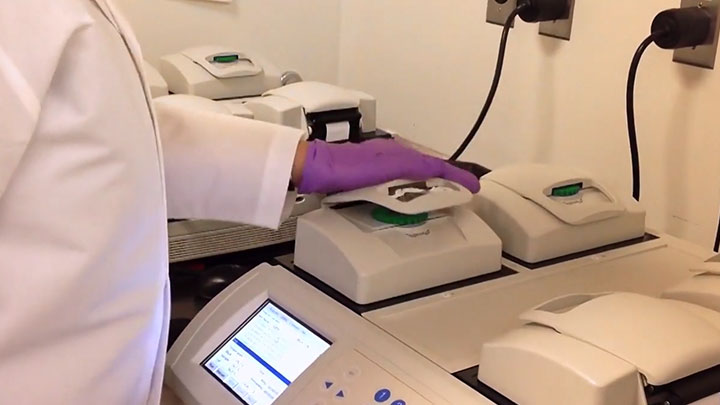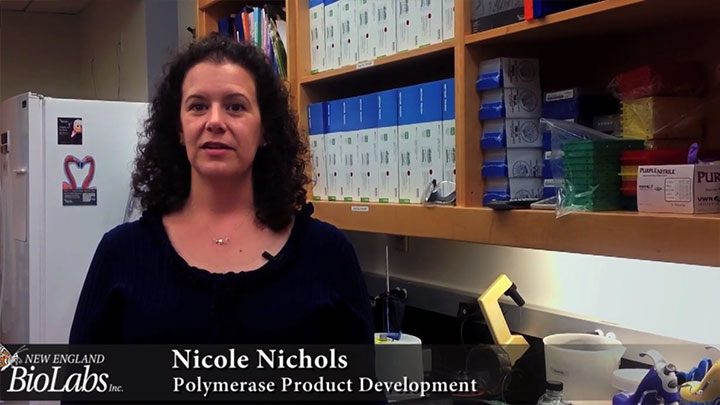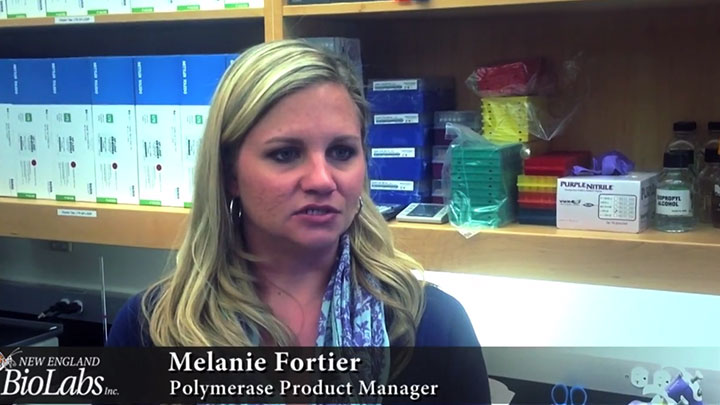How Can I Improve Amplification of GC-rich Regions?
Script
Nicole Nicols:
GC-rich DNA regions can be notoriously difficult to amplify. These targets can be resistant to melting during PCR and many DNA Polymerase don't amplify them well. Additives like DMSO, Butane, and others have been reported to improve GC-rich PCR, but unfortunately these effects are variable depending on the specific target, cycling condition, and the specific PCR enzyme and buffer being used for amplification.
At NEB, we have performed thousands of PCR experiments using various additives and additive blends to determine the best conditions for use with GC-rich PCR. For applications not requiring a high fidelity enzyme, we recommend OneTaq DNA Polymerase which comes with two buffers. One for standard PCR and one for use with GC-rich targets.
The OneTaq GC buffer enhances amplification of targets up to approximately 65% GC. For even greater GC content, we also offer the high GC enhancer that comes with OneTaq. This can be added to the GC buffer to improve amplification on these very difficult targets.
In our experience, we find it's best to start with the standard reaction buffer, then move to the GC buffer if you know your template is high GC. Please remember only add the GC enhancer to the GC buffer, not the standard reaction buffer.
Regarding high fidelity enzymes, it's become very clear that most first generation high-fi enzymes simply don't amplify high GC targets well. So when NEB recently developed Q5 high fidelity DNA Polymerase, special attention was made ensuring that this enzyme would not only amplify typical targets, but would also perform well on GC-rich targets.
When using Q5, you'll note that we recommend using slightly higher annealing temperatures than you may be used to with typical Taq-based products. The use of these higher temperatures is one aspect that allows Q5 to succeed where many other enzymes fail.
In addition, we've developed a proprietary high GC enhancer for use with the Q5 standard reaction buffer. This enhancer dramatically improves amplification of GC-rich targets and we've been able to get successful amplification of targets even as high as 85% GC content.
If you've used GC enhancers in the past, you've probably noted that there's typically a trade off in performance on high AT amplicons in favor of those with high GC content. This is also true for the typical Q5 formulations where the standard reaction buffer amplifies typical fragments very well and the addition of the GC enhancer increases amplification of high GC targets, but at the expense of the high AT targets.
However for the Q5 master mix, we created a unique blend that combines the ability to perform well on high AT all the way through to high GC targets, creating an all-in-one mix that can be used for any amplification reaction.
We're excited about these products and we receive great feedback from our customers about them. We hope you'll give them a try and let us know how they work for you.
Related Videos
-

How to Amplify GC-rich DNA -

Why Choose Q5® High-fidelity Polymerase? -

Important Tips for Q5® Polymerase

